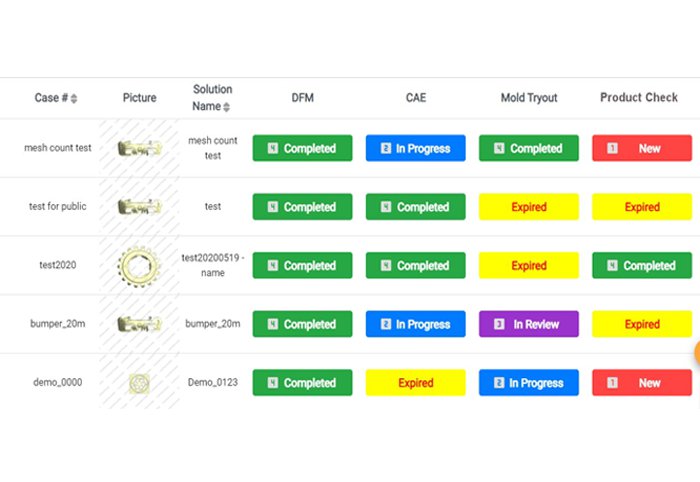
A good task management system increases the efficiency of plastic mold development
ESPECIALLY FOR OUR USERS
The industry is always working hard on the progress of development project management in the development process of plastic injection molding. The whole development process includes the phases of product design, mold design, mold manufacturing and mold sampling, which are accompanied by different team members with different expertise, tasks and results. It is very important to efficiently manage and record the comprehensive workflow. iSLM has integrated a task management system to achieve this goal.
General PLM systems can be used to manage the above process for mold design and development, but the problems are that they are usually very large and expensive. In addition, the general systems can not fully cooperate with the standard process of plastic mold development. Therefore, we need a job management system specifically designed for the plastic mold development process to better manage workflows, projects and human resources. In addition, some specific customizations are often required because the development process is different in different industries and companies.
To meet these requirements, Moldex3D iSLM (intelligent simulation lifecycle management) provides a task management module that allows users to customize various tasks based on their company's requirements. They can also use the Work Breakdown Structure (WBS) feature to break down tool development into required tasks. Status, priority, responsible person and due date can be set for each subtask. In this way, it is possible to clearly display which processes each mold has gone through and how much time each process takes. In addition, users can display detailed descriptions of the task and deliverables in real time by uploading messages, images, or other files. The tasks and project results can also be directly linked in this system.
Using the task list, users can closely follow the work progress of each member or the development of the forms in progress. At the same time, various information can be accessed, including the estimated completion time of each task and the time currently spent on tasks. Viewing the work information through the list and calendar can assist members and allow supervisors to assign tasks and check work progress, making the overall workflow smoother.
For the completed tasks, the visualized bar charts allow supervisors to quickly see the monthly project types and the amount completed by the team, so that they know whether the overall development progress is as expected. They can also use the charts to review the work progress and contribution of each team member. These reliable records can not only be helpful for future work arrangements, but are also a good basis for employee training.
Finally, higher-level managers can view the development progress of every tool set under development in the company and quickly identify which segments are experiencing difficulties. Tasks that have not been completed on time are also flagged. By bringing together the above information about each employee's tasks, managers can efficiently deploy the workforce.
Task management is always a critical issue in the development workflow. A good task management system can help the team execute and record work items more efficiently, improve the development efficiency of teamwork, and become a data treasure for the company. These historical records can also be an important reference for new product development in the future.
